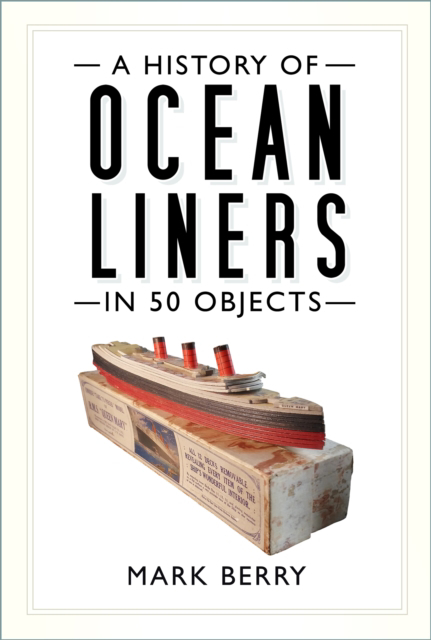Tangible links to a magnificent past
A History of Ocean Liners in 50 Objects, by Mark Berry
 Mark Berry opens this book by explaining what sets a liner apart from a cruise ship, artistically speaking: ‘Three words sum up the elements of a liner: power, design… and soul!’
Mark Berry opens this book by explaining what sets a liner apart from a cruise ship, artistically speaking: ‘Three words sum up the elements of a liner: power, design… and soul!’
Through 50 carefully selected, evocative objects – each lovingly photographed – Berry has done an excellent job in capturing the soul of these magnificent ships, and the spirit of the age which produced them.
The liners were, of course, functional ships from a time before trans-oceanic flight. Yet, as many of the objects show, they were also beautiful and occupied a prominent place in popular culture. This was a time when people aspired to take a journey – as we see from the many promotional posters included in the collection – and they wanted mementoes too, with featured souvenirs including a painting of the SS Giulio Cesare, a miniature life ring from SS Canberra, ships’ bells, card models and sculptures.
There are plenty of objects that are stunning, but more that are simply revealing about life onboard in all circumstances – cigarette cards, salvaged nameplates, rare evacuation photographs from a liner run aground, cocktail glasses, onboard publications and first-class telephones.
The photos are not the only appeal though, as Berry’s explanatory text is packed with technical and historical detail that gives a real sense of what it was like to sail or serve aboard.
There are also fascinating human stories connected with each ship. Among many others, Berry tells of the passenger who left the doomed liner SS Waratah early because of a recurring nightmare; of pioneering female journalist Eliza Putnam Heaton and her book The Steerage: A Sham Immigrant’s Voyage to New York; and of the misery of Charles Dickens, stuck in a storm-flooded cabin aboard the first Cunard liner while the ships’ cow swung comfortably in its hammock.
The only drawback, from a seafarer’s point of view, is that these stories and other explanatory notes tend to focus on the passengers and the liners, with precious little about the crew. Nevertheless, this is a very attractive book that will entertain not only those who have served aboard passenger vessels, but any curious reader.
A History of Ocean Liners in 50 Objects
By Mark Berry
The History Press, £20
ISBN: 978 07509 94323
Buy this book in the Nautilus Bookshop
While you're there, why not browse the rest of the titles in our unique maritime bookshop, which sells all the books reviewed on these pages.
Buy nowMore Books
The precarious path from piracy to prosperity
The Resurrected Pirate, by Craig S ChapmanThe Resurrected Pirate is a remarkable story told in an engaging way, illustrating for the modern reader the desperately narrow passage between life and death that a seafarer in this period might have to navigate.
Carving out a career
Ships' Figureheads: Famous Carving FamiliesThe decoration of ships with figureheads was a way to present the might of military and mercantile power for centuries. These days, the skills needed to make these sculptures are kept alive by experts such as Andrew Peters, who has worked on restoration projects such as the Cutty Sark tea clipper.
Knotty problems solved
The Knot Bible: The Complete Guide to Knots And Their Uses by Nic ComptonKnot-tying is a vital competency skill for seafarers, and this expanded edition of The Knot Bible by Nic Compton offers guidance on over 200 knots and their practical uses.
Why it's nice to splice
Splicing modern ropes, 2nd edition: a practical handbook by Jan-Willem PolmanSplicing rope is as an essential skill for seafarers as tying a knot, but some skills are disappearing. This definitive guide on why splicing gets more from your rope is a great stocking filler for all boaters, whether recreational or commercial.
